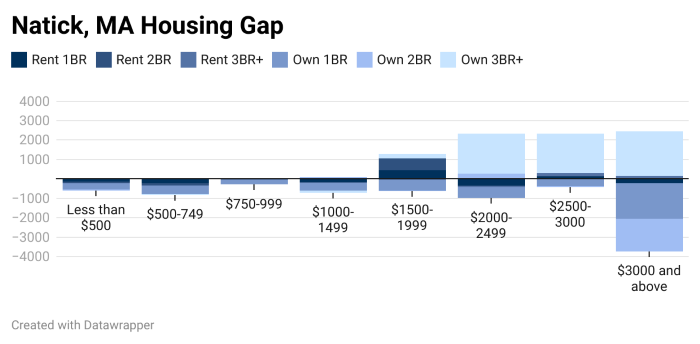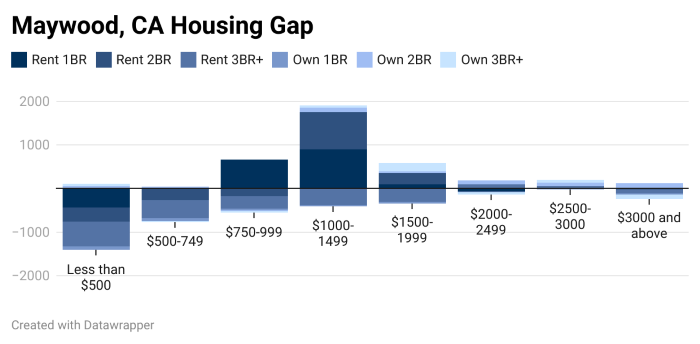n
Replica provides near real-time, granular information that enables the alignment of housing need and supply at a level that was never possible before.
By Nels Nelson and Jeff Sauser, Senior Planners at Stantec Urban Places
The nationwide housing shortage, paired with varied local housing policies and ever-changing populations, makes housing needs analysis incredibly challenging. Determining the real housing needs of a particular community requires fresh, dynamic data representative of the entire population. Aggregate population projections and outdated information aren’t enough to tell the full story of how much and what type of housing communities truly need.
Recently, we measured housing attainability in two different communities, Maywood in downtown Los Angeles, California, and Naticka, a suburb outside of Boston, Massachusetts. Replica data was used to understand the real need for housing in each community and developed a corresponding dataset of the housing supply.
Traditionally, data to measure housing demand has come from American Community Survey (ACS) and Public Use Microdata Samples (PUMS) data, but both have their limitations. For example, attributes like household size, tenure (owner or renter status), and income can inform housing needs but cannot pinpoint the current housing need across attributes with the disassociated data structure found in ACS data. In addition, PUMS data is inadequate as a standalone data source because it is not available everywhere and is not queryable at the community scale.
Alternatively, Replica data offers complete, disaggregated trip and population tables for an average weekday and weekend of the subject season in the selected region. This data allows us to get a complete picture of the housing need by querying multiple attributes in synthetic households and personas to determine household size, tenure, and income.
We use this information to compare against housing availability by focusing on the need for housing type and the number of bedrooms, informed by requirements that determine the minimum size of housing needed by using the number of people and demographics in a household (age, marital status, gender). With Replica’s detailed picture of households and the individuals that live in them, the number of bedrooms required by the household can be determined as a starting point for determining housing market gaps.
Replica’s granular data provides a comprehensive picture of housing need that goes beyond simply understanding traditional housing demand and provides details about the type of housing needed. This additional insight led the team to develop a corresponding picture of housing supply to match the level of granularity that Replica data provided.
For example, Natick has high incomes with a need for one to two bedroom housing. In contrast, Maywood has lower incomes and larger families that need units with three bedrooms or more. Their analysis found that the housing supply for Maywood has smaller units available, and Natick had larger units available, which does not align with either community’s housing needs.


Combining these two data sets provided an unprecedented level of insights regarding housing need and supply. The combination of granular household data with a detailed picture of total housing units provides answers to previously unanswerable questions, including:
The current housing inventory compared to the needs of the current population across incomes and housing types.
Housing supply and demand is nuanced and dynamic and shouldn’t be anecdotal. Replica can provide near real-time, granular information in a holistic and inclusive way that enables the alignment of housing need and supply at a level that was never possible before. No community is the same, and it is critical to get the full picture to make thoughtful decisions and meet the true housing needs of your community.
Nels Nelson and Jeff Sauser are Senior Urban Planners and Designers on Stantec Urban Places team, which helps communities across the globe chart a path to increased livability, equity, and sustainability.